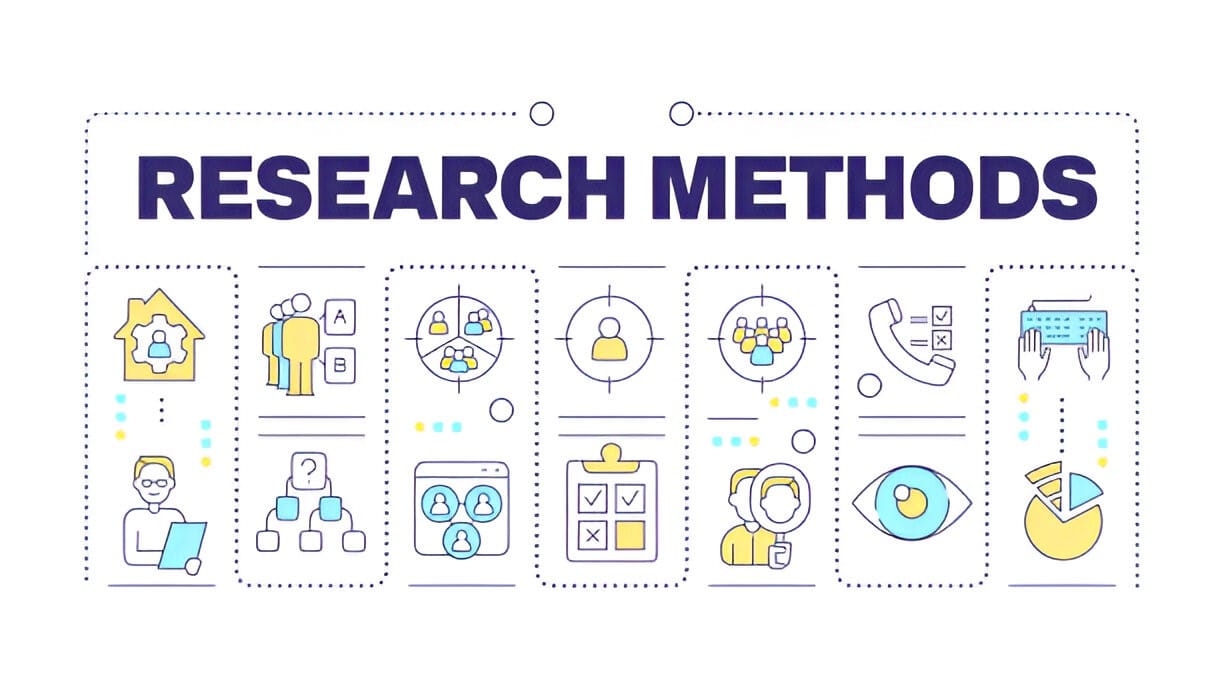What is Marketing Research?

In a world driven by competition and ever-evolving consumer preferences, understanding the market is paramount for businesses seeking success. This is where market research becomes indispensable. Market research forms the foundation of strategic decision-making, empowering organizations to understand their audience, industry patterns, and competitor tactics.
Whether a company is launching a new product, refining its marketing strategies, or exploring expansion opportunities, market research provides the data and insights needed to navigate challenges and capitalize on opportunities. This article delves into the concept and objectives of market research, while understanding its importance in helping businesses make strategic decisions.
Understanding Market Research

Market research systematically collects, examines, and interprets information about a market, including customers, competitors, and prevailing trends. In today's rapidly evolving digital landscape, this research is especially important as it helps businesses grasp both established and new market trends, ultimately informing their strategic choices and responses to change.
How Does Market Research Work?
Market research is a systematic process that helps businesses evaluate the feasibility and potential success of new products, services, or strategies before they are introduced to the market. It is essential for strategic management and decision-making, helping organizations comprehend their audience, identify growth opportunities, and mitigate potential risks. Here’s how market research works:
Defining Objectives
The process begins with a clear understanding of what the research aims to achieve. Objectives might include identifying consumer preferences, evaluating market demand, or analyzing competitor performance. Setting specific goals ensures the research stays focused and yields actionable insights.
Data Collection
Data collection is the backbone of market research, and it involves gathering information from various sources. This includes:
- Primary Data: Collected firsthand through methods like surveys, interviews, focus groups, and observations.
- Secondary Data: Sourced from existing research, industry reports, government statistics, and competitor analyses.
The selection of a method is influenced by the research goals, available budget, and the target demographic.
Analysis of Data
After data is collected, it is processed and analyzed to identify patterns, correlations, and trends, using both qualitative and quantitative methods. For example:
- Identifying customer preferences.
- Understanding purchasing behavior.
- Spotting gaps in the market.
Advanced tools like analytics software and data visualization platforms are often used to make data interpretation more efficient and precise.
Drawing Conclusions
The insights gleaned from the analysis are used to draw conclusions about the market. This stage helps businesses answer critical questions like:
- Who is the target audience?
- What aspects of a product or service do customers find most valuable?
- What is the optimal way to position the product in the marketplace?
Implementing Insights
The final step involves converting research findings into actionable strategies, enabling businesses to improve product design, customize marketing efforts, and align pricing with customer expectations.
Research Methods in Action
Market research employs various methods to gather and validate insights:
- Surveys: Efficient for collecting large-scale quantitative data on customer opinions.
- Focus Groups: Enable in-depth discussions that reveal consumer attitudes and emotions.
- Product Testing: Provides hands-on feedback about usability and features.
- Observations: Capture real-world interactions with products or services in natural settings.
A Continuous Process
Market research is an ongoing endeavor. To remain competitive and responsive, businesses must continually gather and evaluate data as consumer preferences and market conditions evolve.
By clarifying customer requirements and monitoring market trends, market research enables companies to make smarter choices, reduce risks, and design offerings that resonate with their target market
Primary Market Research vs. Secondary Market Research
By offering valuable insights about consumer inclinations, evolving market patterns, and analysis of competitors' activities, market research serves as a fundamental tool in corporate strategy development. This research framework encompasses two distinct categories: primary market intelligence and secondary market analysis
Each serves a distinct purpose and involves different methods of data collection. Here’s a closer highlight to their unique aspects, advantages, and applications.
Primary Market Research
Primary market research involves obtaining data directly from sources, providing original and tailored insights specific to a particular research goal. Businesses often conduct this type of research to gain insights tailored to their unique needs, ensuring relevance and specificity.
Methods of Primary Research
- Surveys: Online, phone, or in-person questionnaires help collect large-scale quantitative or qualitative data about consumer opinions.
- Observations: Tracking how individuals interact with products, services, or environments to understand behavior and patterns.
- Experiments: Testing variables like pricing or packaging to determine the most effective strategies.
- Interviews: Comprehensive discussions with individuals aimed at uncovering detailed insights that may be overlooked by surveys.
- Focus Groups: Guided discussions among small groups to gather collective feedback and explore attitudes.
Advantages of Primary Research
- Relevance: It provides highly specific data tailored to research goals.
- Timeliness: Data is collected in real time, reflecting current trends and consumer behaviors.
- Control: Businesses oversee the data collection process, ensuring accuracy and reliability.
Drawbacks of Primary Research
- Cost: Conducting primary research can be expensive, particularly if extensive surveys, focus groups, or experiments are involved.
- Time-Consuming: Designing, collecting, and analyzing primary data requires significant time and resources.
Secondary Market Research
Secondary market research involves evaluating existing data and resources published by other entities. This is often referred to as desk research, as it can typically be conducted without leaving one’s workspace.
Sources of Secondary Research
- Research Databases: Platforms like Google Scholar, Science.gov, and ResearchGate offer access to academic studies and reports.
- Government Publications: Reports on economic trends, industry performance, and demographic statistics.
- Industry Reports: Insights provided by consulting firms, such as McKinsey or Statista.
- Google Trends: It provides a way to monitor search patterns and consumer interests over time.
- Books and Theoretical Frameworks: Useful for foundational knowledge and understanding established principles.
Advantages of Secondary Research
- Cost-Effective: Most secondary sources are free or relatively inexpensive compared to primary research.
- Timesaving: Data is readily available, eliminating the need for direct collection.
- Exploratory Value: It provides a starting point for understanding broad trends and can help shape the direction of primary research.
Drawbacks of Secondary Research
- Relevance Issues: Data collected for a different purpose may not perfectly align with specific research objectives.
- Outdated Information: Secondary research may not reflect current market dynamics or recent changes in consumer behavior.
- Credibility Concerns: The quality and accuracy of the data depend on the reliability of the original source.
Using Both Approaches
While primary and secondary research have distinct roles, using them together often leads to the most effective outcomes. Secondary research helps pinpoint gaps, confirm existing beliefs, and offer a general perspective. On the other hand, primary research fills these gaps with targeted, actionable insights that align with the business's specific objectives.
For example, a company may start with secondary research to grasp industry trends and competitor tactics and then follow up with surveys or focus groups to gather insights on consumer preferences related to their brand. This combined method ensures a comprehensive, efficient, and impactful market research strategy.
Types of Market Research

In addition to primary and secondary market research, businesses use a range of other specialized approaches to gain insights. These methodologies are tailored to specific research objectives, assisting in the exploration, analysis, and understanding of many elements of consumer behavior, market trends, and product development. The following are the other main categories of market research:
Qualitative Research
Qualitative research collects non-numerical data to provide detailed insights into customer attitudes, preferences, and actions. This research approach seeks to uncover the reasons and motivations behind consumer actions, focusing on the "why" and "how" rather than just numerical outcomes.
Key Characteristics:
- Rather than providing specific measures, it summarizes and evaluates data to gain a larger insight.
- Often used to explore customer reactions, opinions, and emotional connections.
Methods:
- Focus groups and one-on-one interviews to understand customer perspectives.
- Observations that reveal behavioral patterns.
This research is ideal for gaining a deeper understanding of market sentiment or testing initial ideas before larger-scale analysis.
Quantitative Research
Quantitative research involves collecting numerical data to measure patterns, trends, and behaviors across a larger population. It provides a statistical foundation that allows businesses to benchmark performance, test hypotheses, and make data-driven decisions.
Key Characteristics:
- Focuses on measurable data points such as customer preferences, product usage, or purchase frequency.
- Provides evidence for trends and supports predictive analysis.
Methods:
- Surveys and polls with structured questions.
- Data from financial records, web analytics, or market reports.
To develop a thorough understanding, researchers typically combine quantitative methodologies with qualitative approaches.
Branding Research
Branding research is designed to help companies assess, develop, and refine their brand image and positioning. It ensures that a brand connects effectively with its intended audience and sustains its market relevance.
Objectives:
- Measure brand awareness and visibility among consumers.
- Understand brand perception, including strengths and weaknesses.
- Assess brand loyalty and customer sentiment.
Methods:
- Surveys to gauge brand recognition and preferences.
- Focus groups provide an opportunity for rich discussions, revealing perceptions about brand identity.
Branding research ensures a company’s messaging, design, and values align with consumer expectations and market positioning.
Customer Research
Customer research aims to comprehend the behaviors, preferences, and needs of a target audience to enhance satisfaction and build loyalty.
Key Areas:
- Customer satisfaction: What drives satisfaction and retention?
- Customer loyalty: Analyzing factors that increase long-term commitment.
- Segmentation: It entails grouping customers based on shared traits and behaviors.
Methods:
- Net Promoter Score (NPS) surveys to measure customer advocacy.
- Customer interviews to gain valuable insights into their experiences and interactions.
This type of research helps businesses identify opportunities to enhance the customer experience.
Competitor Research
Competitor research examines rival businesses to understand their strategies, strengths, and vulnerabilities. This information helps companies identify competitive advantages and areas for improvement.
Objectives:
- Analyze competitors' offerings, pricing, and positioning.
- Identify gaps in the market that can be leveraged.
Methods:
- SWOT (Strengths, Weaknesses, Opportunities, Threats) analysis for direct comparisons.
- Desk research to review competitors’ financial performance, customer reviews, and marketing campaigns.
Competitor research enables informed decision-making and future-proofing strategies.
Product Research
Product research is aimed at ensuring that products meet customer needs, provide value, and remain competitive in the market. This research spans the entire product lifecycle, from ideation to post-launch evaluation.
Focus Areas:
- Feature testing: Evaluating reactions to new or improved product features.
- Design optimization: Ensuring products are functional, attractive, and user-friendly.
- Marketing effectiveness: Testing whether promotional strategies boost memorability and appeal.
Methods:
- Surveys to rank feature preferences or usability.
- Observing product trials can reveal usability issues and uncover opportunities for enhancements.
Product research is crucial for refining products to ensure they remain relevant and competitive in changing markets.
Businesses that use different types of market research in their strategy can acquire a comprehensive insight of their customers and industry. Each method has a distinct purpose, and when combined, they provide significant insights that drive innovation, growth, and consumer satisfaction.
How to Conduct Market Research?
Understanding your audience, enhancing your products or services, and arriving at wise business judgments depend on following a strategic process of market research. It involves:
Defining Buyer Personas
Begin by creating in-depth profiles of your target customers, commonly referred to as buyer personas. These are fictional representations based on real data about your target audience’s demographics, behaviors, challenges, and needs. Buyer personas help you better understand your audience’s preferences and decision-making processes.
Identifying and Engaging the Right Participants
Once your buyer personas are defined, identify and recruit a group of participants who reflect these profiles. This ensures your research data is relevant and representative. Use methods such as social media outreach, word-of-mouth referrals, or professional market research firms to recruit participants. Pre-screen them using surveys or questionnaires to ensure they fit the desired demographic.
Formulating Hypotheses and Questions
Outline the questions your research aims to answer. Create hypotheses that align with your research objectives, and structure your questions to test them effectively. For example:
- Question: What do customers value most in our product?
- Hypothesis: Customers value ease of use more than any other feature.
Prepare a list of unbiased, neutral questions to guide your research. Structure these in a logical sequence to ensure clarity and depth of responses.
Choose Research Methods
Select the appropriate type of research methodology to collect data effectively. This could include:
- Primary Research: Conduct focus groups, surveys, one-on-one interviews, or usability tests for direct insights.
- Secondary Research: Use existing reports, market studies, or public data to identify trends and gaps in the market.
Analyze Your Competitors
Compile a list of competitors and evaluate their strengths, weaknesses, market position, and customer base. Use tools such as SWOT analysis to evaluate your competitive environment and identify areas for differentiation.
Conduct the Research
Implement your chosen research methodology:
- For interviewing focused groups, enlist a neutral moderator to minimize bias.
- For surveys, ensure the questions are clear and concise and have a format that allows for varied responses.
- Record and securely store the data collected, whether qualitative or quantitative.
Summarize and Organize Data
After collecting data, organize it for analysis. Use tools like charts, graphs, or spreadsheets to identify patterns and trends. This step allows researchers to convert collected information into actionable intelligence that can steer organizational decisions.
Communicate Findings Through Storytelling
Share your findings in a clear and engaging manner, employing storytelling techniques to emphasize key takeaways and practical recommendations. For instance, translate customer feedback into scenarios or narratives that resonate with stakeholders.
Develop Actionable Insights
Turn your findings into clear, actionable steps. For example:
- If customers find your product difficult to assemble, consider revising instructions or offering tutorial videos.
- If your brand awareness is low, explore marketing strategies to increase visibility.
Iterate and Repeat
The scope of market research is vast and not a one-time process. Regularly revisit your findings, test new hypotheses, and refine your approach to stay aligned with evolving market trends and customer needs.
Following these steps allows businesses to conduct market research that provides actionable insights, supports strategic goals, and deepens their understanding of the target audience.
What are the Benefits and Drawbacks of Market Research?

Benefits
- Risk Management: Market research helps understand consumer behavior patterns to reduce risks.
- Sales Improvement: Conducting research provides actionable insights into customer needs and preferences while allowing businesses to capitalize on emerging opportunities.
- Brand Recognition: Market research helps refine advertising and marketing strategies by identifying the channels and platforms most frequented by the target audience.
- Brand Reputation: Understanding how the public perceives a brand through research can highlight areas needing improvement and guide strategies to strengthen reputation.
- Long-Term Value: While research requires initial investment, it provides a foundation for sound decision-making that can lead to long-term profitability.
Drawbacks
- Cost: Market research can be expensive, especially for smaller businesses. Hiring external firms or maintaining an in-house research team adds to operational costs.
- Time Investment: The research process involves multiple stages, such as identifying research questions, collecting data, and analyzing results. This can be time-consuming, delaying immediate benefits.
- Sample Representation: Market research often relies on data from small sample populations, which may not fully represent the broader target market. Limited sample populations can sometimes result in partial or biased findings.
- Resource Requirements: Effective market research demands skilled professionals. While larger companies may have in-house teams, smaller businesses must carefully weigh the costs of external research firms against the benefits of in-house research.
FAQs
Q1. What is a good example of market research?
Ans: A great example of market research is a company conducting a survey to understand customer preferences before launching a new product. For example, a smartphone company might ask potential customers about their preferred features, price range, and design before introducing a new model. This helps the company tailor the product to meet consumer expectations and increase the chances of success in the market.
Q2. What is the difference between market research and marketing research?
Ans: Market research focuses specifically on understanding the target market, customer needs, trends, and competitors. It helps organizations to gain deeper understanding of consumer purchasing patterns and current market dynamics.
Marketing Research on the other hand, is broader, which includes market research but also focuses on evaluating the scope of marketing strategies, advertising campaigns, and overall marketing efforts. It looks at how well a business’s marketing strategies are working to reach its audience and achieve goals.
Summing Up
In conclusion, market research plays a vital role in any effective business strategy. By methodically gathering and interpreting data, organizations can reveal meaningful insights into consumer preferences, industry trends, and competitor strategies.
Whether utilizing primary or secondary research, or employing qualitative or quantitative methods, market research enables organizations to make informed decisions that reduce risks, refine strategies, and improve customer satisfaction.
Although the process demands time, effort, and resources, the advantages significantly outweigh the challenges, equipping businesses with a solid foundation for long-term growth and success.





